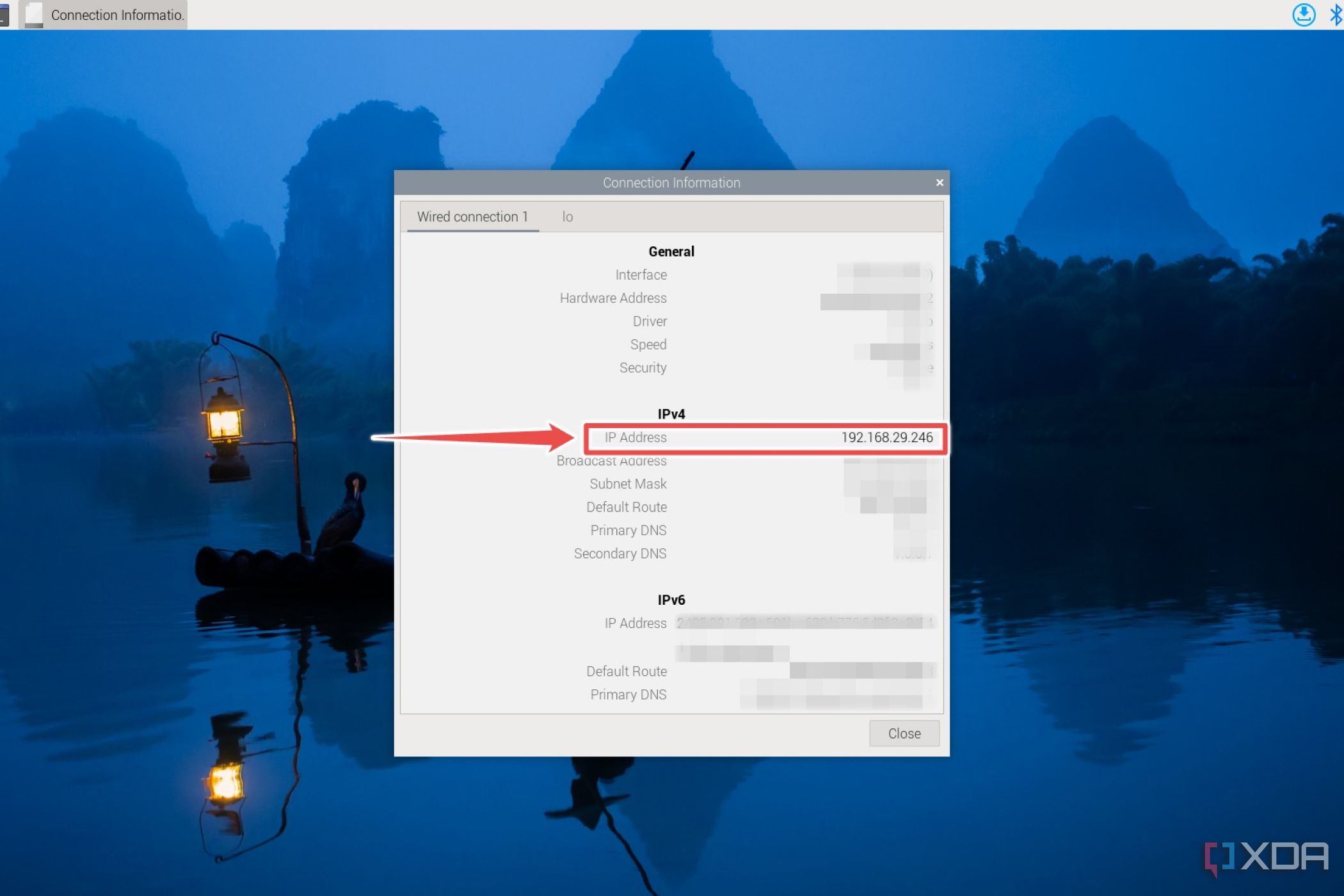How To Securely And Directly Connect Raspberry Pi IP Address: A Beginner’s Guide
Connecting your Raspberry Pi to the internet or a local network is one of the most fundamental tasks for any Pi enthusiast. But here's the catch—doing it securely and directly is crucial to protect your device from potential threats. Whether you're setting up a home server, IoT device, or just tinkering around, understanding how to connect your Raspberry Pi IP address the right way is a must-know skill.
Now, let's face it—Raspberry Pi projects can be both exciting and daunting, especially when you're just starting out. But don’t worry! This guide will walk you through everything you need to know about securely and directly connecting your Raspberry Pi IP address. From basic configurations to advanced security tips, we’ve got you covered.
By the end of this article, you'll not only know how to connect your Raspberry Pi but also how to safeguard it against unauthorized access. So, buckle up and let’s dive into the world of Raspberry Pi networking!
- Gia Duddy Leak The Untold Story Behind The Viral Sensation
- Cece Rose Onlyfans The Ultimate Guide To Her Rise Content And Legacy
Here's a quick overview of what we'll cover:
- Understanding Raspberry Pi IP Address
- Steps to Connect Your Raspberry Pi Securely
- Troubleshooting Common Issues
- Advanced Security Measures
What is a Raspberry Pi IP Address?
Alright, let’s start with the basics. An IP address is like a digital home address for your Raspberry Pi. It allows your device to communicate with other devices on the same network. Think of it as the unique identifier that lets your Pi talk to routers, computers, and even the internet.
There are two main types of IP addresses: static and dynamic. A static IP address is fixed and doesn’t change, while a dynamic IP address can change every time your device reconnects to the network. For most Raspberry Pi projects, having a static IP address is preferred because it makes things more predictable and easier to manage.
- Bhad Bhabie Nude The Untold Story Behind The Hype And Controversy
- Michelle Mylett Nude Separating Facts From Fiction And Understanding The Bigger Picture
So, why is it important to know your Raspberry Pi’s IP address? Well, without it, you won’t be able to access your Pi remotely, which is essential if you’re using it as a headless device (meaning without a monitor or keyboard).
Why Securely Connect Your Raspberry Pi?
Now, here’s the thing—connecting your Raspberry Pi to a network exposes it to potential risks. If not configured properly, your Pi could become an easy target for hackers or malicious actors. That’s why it’s super important to connect your Raspberry Pi securely.
By securing your Pi, you’re protecting sensitive data, ensuring smooth operation, and preventing unauthorized access. Imagine someone gaining control of your home automation system or accessing your personal files. Scary, right? That’s why we’re here—to teach you how to avoid those nightmare scenarios.
Some key benefits of secure connections include:
- Protection against unauthorized access
- Improved system stability
- Peace of mind while working on your projects
How to Find Your Raspberry Pi IP Address
Before you can connect your Raspberry Pi, you need to find its IP address. This is easier than it sounds, trust me. Here’s how you can do it:
Method 1: Using the Command Line
If your Raspberry Pi is connected to a monitor, you can simply open the terminal and type:
hostname -I
This will display your Pi’s IP address. Easy peasy!
Method 2: Using Your Router
Another way to find your Pi’s IP address is by logging into your router’s admin page. Most routers have a section that lists all connected devices along with their IP addresses. Just look for the device named “raspberrypi” or something similar.
Pro tip: If you’re using a static IP address, make sure to note it down so you don’t forget later!
Steps to Securely Connect Your Raspberry Pi IP Address
Now that you know your Pi’s IP address, it’s time to connect it securely. Follow these steps carefully:
Step 1: Configure SSH
SSH (Secure Shell) is a protocol that allows you to remotely access your Raspberry Pi. To enable SSH, simply:
- Boot up your Raspberry Pi
- Open the terminal
- Type
sudo raspi-config - Select "Interfacing Options"
- Enable SSH
Once SSH is enabled, you can connect to your Pi from another computer using an SSH client like PuTTY (for Windows) or simply the terminal (for macOS and Linux).
Step 2: Set Up a Static IP Address
Having a static IP address ensures that your Pi always has the same address, making it easier to connect. Here’s how:
- Open the terminal on your Raspberry Pi
- Edit the dhcpcd configuration file:
sudo nano /etc/dhcpcd.conf - Add the following lines at the bottom:
interface eth0
static ip_address=192.168.1.100/24
static routers=192.168.1.1
static domain_name_servers=192.168.1.1
Replace the IP address, router, and DNS with your network’s details. Save and exit, then reboot your Pi.
Step 3: Install and Configure a Firewall
A firewall is like a digital bouncer—it keeps unwanted traffic out while allowing legitimate connections in. To set up a firewall on your Raspberry Pi:
- Install ufw:
sudo apt install ufw - Enable the firewall:
sudo ufw enable - Allow SSH connections:
sudo ufw allow ssh
And just like that, your Pi is protected from unwanted visitors.
Troubleshooting Common Issues
Even the best-laid plans can go awry sometimes. If you’re having trouble connecting your Raspberry Pi, here are a few common issues and how to fix them:
Issue 1: Can’t Find the IP Address
Solution: Double-check your router’s admin page or use a network scanner app like Fing to locate your Pi.
Issue 2: SSH Not Working
Solution: Make sure SSH is enabled and that your firewall allows SSH connections. Also, ensure that your SSH client is properly configured.
Issue 3: Static IP Not Sticking
Solution: Verify that your dhcpcd configuration file is correct and that no other device on the network is using the same IP address.
Advanced Security Measures
For those who want to take their Raspberry Pi security to the next level, here are some advanced tips:
1. Change the Default SSH Port
Changing the default SSH port (22) can help deter automated attacks. To do this:
- Edit the SSH config file:
sudo nano /etc/ssh/sshd_config - Find the line that says
Port 22and change it to a different number (e.g., 2222) - Restart the SSH service:
sudo service ssh restart
2. Use Key-Based Authentication
Instead of relying on passwords, you can use SSH keys for authentication. This method is more secure and convenient. To set it up:
- Generate an SSH key pair on your computer:
ssh-keygen - Copy the public key to your Raspberry Pi:
ssh-copy-id pi@your-pi-ip - Disable password authentication in the SSH config file
3. Regularly Update Your Pi
Keeping your Raspberry Pi up to date is one of the best ways to stay secure. Use the following commands to update your system:
sudo apt update && sudo apt upgrade
Conclusion
And there you have it—a comprehensive guide to securely and directly connecting your Raspberry Pi IP address. By following the steps outlined in this article, you’ll be able to set up your Pi with confidence, knowing that it’s protected from potential threats.
Remember, security is an ongoing process. Stay vigilant, keep your system updated, and don’t hesitate to explore advanced security measures if needed.
Now, it’s your turn! Have you successfully connected your Raspberry Pi? Share your experience in the comments below. And if you found this article helpful, don’t forget to share it with your fellow Pi enthusiasts. Happy tinkering!
References
For further reading and verification, check out these trusted sources:
Table of Contents
- What is a Raspberry Pi IP Address?
- Why Securely Connect Your Raspberry Pi?
- How to Find Your Raspberry Pi IP Address
- Steps to Securely Connect Your Raspberry Pi IP Address
- Troubleshooting Common Issues
- Advanced Security Measures
- Conclusion
- References



Detail Author:
- Name : Mr. Irving Tremblay Sr.
- Username : cletus.block
- Email : hhessel@yahoo.com
- Birthdate : 1994-11-04
- Address : 275 Shanahan Fort Irvingland, DE 93954-1946
- Phone : +1 (938) 515-1009
- Company : Smitham-Bashirian
- Job : Customer Service Representative
- Bio : Et hic voluptatem dolorem illo. Esse eum doloremque tenetur libero modi voluptate molestiae. Non aut non qui ipsa quod. Consectetur praesentium eligendi eveniet aut ut.
Socials
tiktok:
- url : https://tiktok.com/@roma.lockman
- username : roma.lockman
- bio : Voluptatem corrupti reprehenderit necessitatibus incidunt et voluptatum.
- followers : 1153
- following : 606
linkedin:
- url : https://linkedin.com/in/romalockman
- username : romalockman
- bio : Fuga amet ut ut iste et dolores omnis veniam.
- followers : 5572
- following : 994